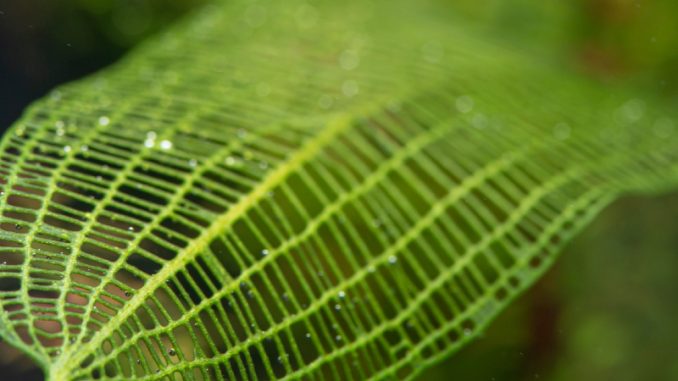
Anyone in the aquarium trade is familiar with the signature lacey leaves of the Madagascar Lace plant. You may have heard that this is a difficult plant to keep and that it is not recommended for beginners.
However, once you are familiar with the plant’s needs, even someone new to the aquarium hobby should be able to grow this signature plant successfully. It’s very forgiving to varying conditions in lighting, pH, temperature, and water hardness, and will continue to grow even in less than ideal conditions.
This plant used to be very rare and difficult to find, but now they are more readily available. Usually planted in the background or midground of the home aquarium, the Madagascar Lace plant takes center stage no matter where you put it.
In this article, I’ll cover the background of Madagascar Lace plants, growing and propagation tips, water parameters, and even which fish and invertebrates pair well with this unique-looking aquatic plant.
TABLE OF CONTENTS
Madagascar Lace Plant Facts & Overview
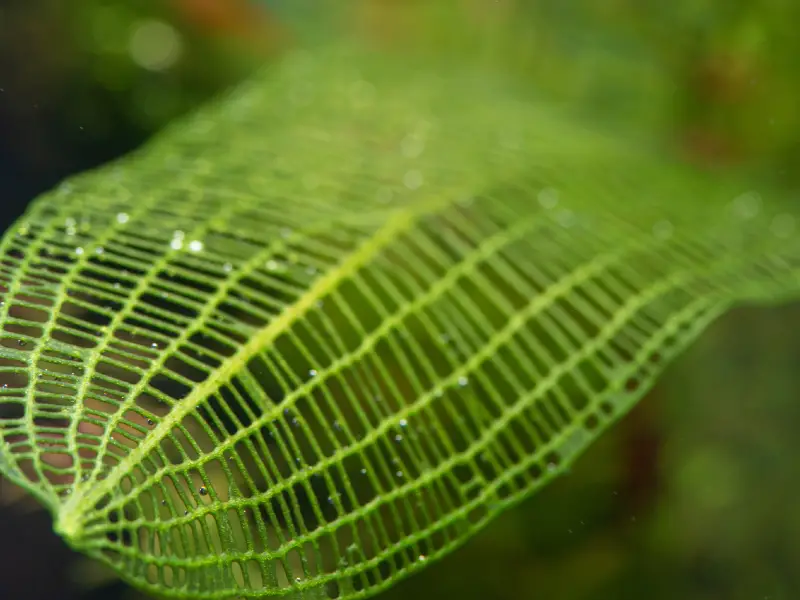
| Category | Rating |
| Care Level: | Easy |
| Temperature: | 65°-74° F (18°-23° C) |
| Color Form: | Green |
| Propagation: | Bulbs (rhizomes), seeds |
| Size: | 6-8 inches |
| pH: | 6.5-7.5 |
| Family: | Aponogetonaceae |
| Minimum Tank Size: | 10 gallons |
| Placement: | Mid-ground to background |
| Lighting: | Low to moderate |
You can probably guess that the Madagascar Lace plant is native to the island of Madagascar, which is located near the eastern coast of Africa. Madagascar Lace, scientific name Aponogeton madagascariensis, is well known in the aquarium hobby as the Aponogeton that has no connective tissue, giving it a skeletal or lacey appearance, depending on how you look at it.
Also known as lace plant, lattice leaf, or Madagascar laceleaf, Aponogeton madagascariensis is also found in Australasia and Asia. Sadly, although they are bred in captivity and therefore widely available in the aquarium trade, Madagascar Lace plants are endangered in the wild because of habitat destruction, pollution, and overuse in the aquarium trade.
Contrary to popular belief, Madagascar Lace plants grow easily in a home aquarium, even if you are not steadfast in keeping water conditions optimal. They are adaptable to temperature, pH, water hardness, and lighting fluctuations. True, Madagascar Lace plants will grow more slowly when the recommended parameters are not met, but they will continue to grow.
Pro-tip: Although Madagascar Lace plants are not too picky about water conditions, the fish and invertebrates that share the tank with them are likely not as hardy, so you’ll still need to test the water regularly and maintain conditions in which all your aquatic friends can thrive.
For the Madagascar Lace plant, cleaning algae off the leaves is the most important care step. Too much algae will block light, preventing photosynthesis and threatening the life of this standout plant.
Madagascar Lace plants are deceiving, as they have a very delicate appearance, but are actually tough and sturdy. This combination may be one of the reasons that they have gained a reputation as difficult to take care of.
Typical Behavior
Unlike other bulb plants, Madagascar Lace plants are fully aquatic and therefore do not need to go through a resting — or dormant period. However, that also means that you’ll have to keep them well fertilized throughout the year, as they will be using the nutrients most Aponogetons store up for use during the dormant season.
Pro-tip: It’s a common misconception that Madagascar Lace plants require a resting period. They’re the only Aponogetons that don’t require a resting period. That’s because they are really rhizomes, not bulbs, but we generally use bulbs as a general term.
In the wild, if Madagascar Lace plants go through a dormant season, it has to do with the rainy season that leaves them submersed during the blooming season and emersed during the dry season, at which point they dry out.
Most bulb plants that are grown in home aquariums need to be removed from the water during the dormant season because there are no dry seasons in aquariums. The Madagascar Lace plant, however, will continue to grow year-round.
If you do feel better about letting it rest outside the tank, you can put the bulb in a heavy plastic bag that you’ve filled with damp sand, storing it in a cool, dry location. The resting period for other Aponogetons is generally about 6 months out of the year.
If you feel better about offering your Madagascar Lace plants a rest, you can rotate them out in order to enjoy them all year long.
Appearance
Madagascar Lace reaches a height of 10-24 inches (25-60 cm) and a width of 10-12 inches (25-30 cm). The appearance of these plants is absolutely mind-blowing, and it’s where they get their name. You see, Madagascar Lace plants have leaves with no connective tissue, so they look just like delicate lace.
Don’t let the delicate appearance fool you, though. The leaves of the Madagascar Lace plant are strong and able to withstand stronger currents.
Adding Madagascar Lace to your home aquarium surely adds something special to the biosphere. In addition to the delicate green lace, you’ll notice that the leaves are oblong, far longer than they are wide. They will grow submerged, parallel to the water’s surface.
The flowers are quite small, growing to only about 1.2 inches (3 cm). The Madagascar Lace’s pollinated fruit is shaped like a greenhorn, and the water-repellant full-grown seeds are waxy, with a milky, violet hue.
Habitat and Tank Conditions
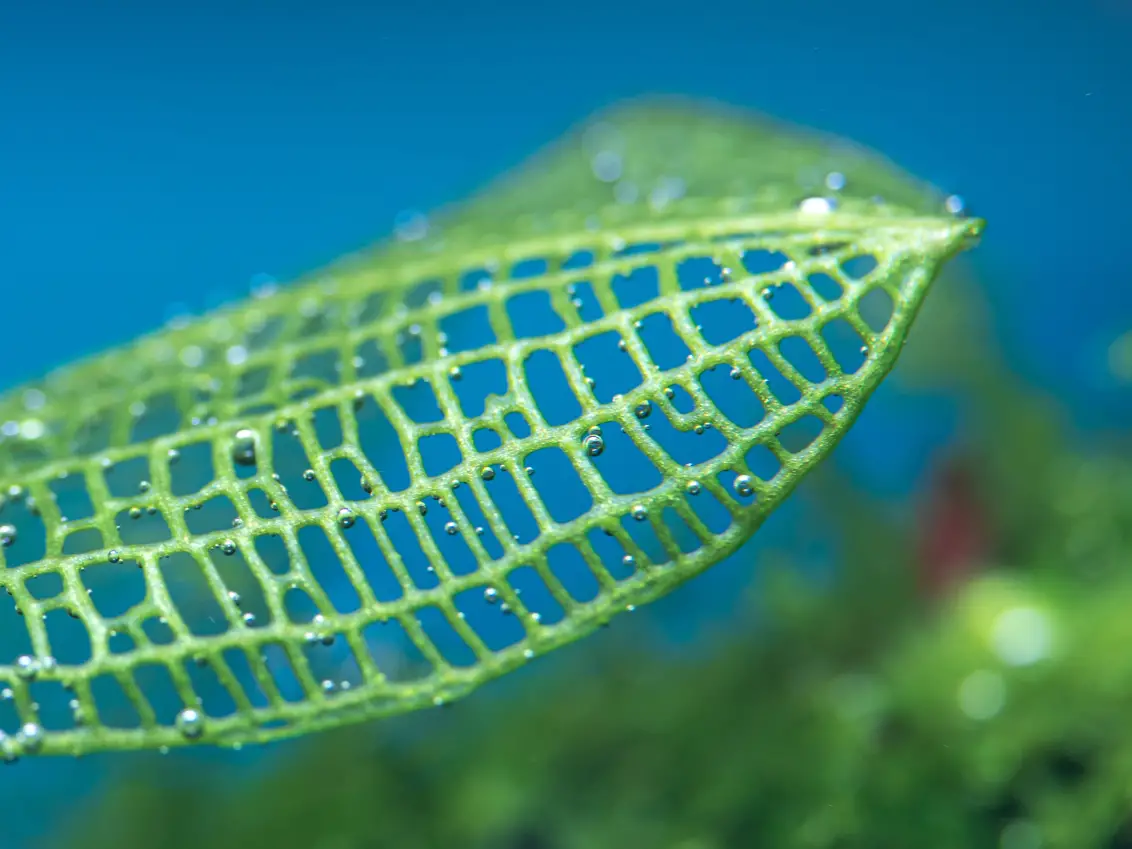
In the wild, Madagascar Lace plants enjoy fast-moving waters (see next section) and shade. Therefore, in your home tank, you’ll want to provide low to moderate light. Don’t mix this Aponogeton with a plant that requires super bright light, like Monte Carlos and Dwarf Baby Tears. You could burn out the Madagascar Lace with a high-intensity light.
A moderate level of 3-5 watts is ideal, and you should make sure there are some shady areas, too. You should consider investing in a timer and offering light 12 hours a day. Providing the proper light will help to combat melt and encourage healthy growth.
Some aquarium enthusiasts report planting their Aponogetons in sand or gravel, but I prefer dirt, as it is chock full of nutrition that the roots of the Madagascar Lace plant will gladly pull from the soil. These plants will root themselves; you don’t need to put them into the substrate too deeply.
You should have about 2 inches of substrate lining the tank bottom.
In fact, if you lay it down on the substrate, in about a week, you’ll see the stem starting to emerge from the bulb and then you can gently push the opposite end into the substrate, where the roots will grow a little later.
Water Conditions
Madagascar Lace plants grow in cooler temperatures. And in the wild, they live in fast-moving rivers, so you want to make sure that you’re using a filter that is strong enough, and not to house them with fish that can’t tolerate a stronger current.
A moderate-sized plant, Aponogeton madagascariensis 6 to 8 inches (15.2 to 20.3 cm), but note that if you are offering CO2 injections and extensive fertilizers, you will see much more substantial growth, so the water conditions do have an effect on plant size.
The optimal parameters to ensure the best quality of life for Madagascar Lace plants:
- Temperature: 59° – 75° F (15° – 24° C)
- Water hardness: 4-15 dGH
- pH: 6.5 – 7.5
- Lighting: Low to Moderate
What Size Aquarium Do They Need?
You’ll need at least a 10-gallon (40-liter) tank to allow Madagascar Lace to grow. Remember that your care will have an effect on how big these plants grow; if you have them in a larger tank and are using heavy fertilization and not pruning, they can easily decorate a much larger tank.
Suitable Tank Mates
One has to be mindful when curating a home aquarium. When pairing plants and aquatic pets, you need to ensure that conditions are compatible for all species, and also that they will live peacefully together. With plants, you have to make sure that no other aquarium residents are going to eat and/or destroy their leaves or dig up their roots.
Safe Tank Mates
- Nerite Snails
- Small Plecos
Unsuitable Tank Mates
Planting and Growing
While Madagascar Lace plants are not the best plants for an absolute beginner, they do lend themselves to aquarium growth and it is possible for a beginner to successfully raise them.
Propagation is achieved through seedlings or bulbs, but the latter is definitely the most common, and if you are buying Aponogetons, you will most definitely receive a bulb (as mentioned before, we’re using the term bulb as a general umbrella term, even though the Madagascar Lace plant is technically a rhizome).
Use a substrate dense in nutrients (see above) and wait for the development of roots. At that point, you can separate the baby plants from the mother and replant for more coverage.
Madagascar Lace reproduces sexually with seed formation. Green fruit that resembles a horn will form a few weeks after pollination has taken place. You can encourage growth by using a brush or sponge to spread the pollen when the flowers open.
After the fruit ripens, those violet milky seeds emerge and float on the water’s surface for a couple of days until they sink to the bottom. After a few days, seedlings will develop and eventually turn into baby plants.
Care
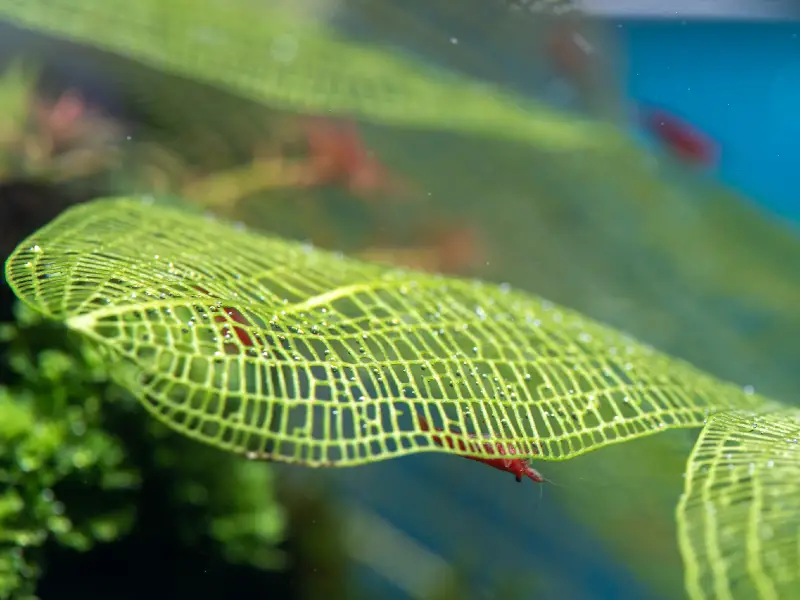
Madagascar Lace plants need nutrients from the soil to help them grow and thrive. They will pull nutrients through their roots, so you want to make sure to use dirt as a substrate. You will often hear me offering alternate substrates based on what you already have in your aquarium.
However, with Madagascar Lace, I recommend only nutrient-packed dirt. Therefore, only plant this Aponogeton in an established tank that already has dirt, or in a new tank in which you’re using dirt. Planting a Madagascar Lace plant in sandy or gravel substrate will just not provide the nutrients needed, even if you are supplementing with liquid fertilizer or CO2 injections.
In addition to the fertilization from the substrate, supplements, and CO2, the waste that your fish produce will also feed the Madagascar Lace plant. Your plants will absorb CO2, ammonia, urea, uric acid, and phosphates, helping them grow and cleaning your tank at the same time.
Pro-tip: You will notice healthier, more lush plants if you offer regular fertilization in smaller amounts rather than hitting them with a larger but more infrequent shot of fertilizer.
If you are using a smaller 10-gallon tank, make sure to trim and prune your Madagascar Lace so that it doesn’t run out of room.
Finally, take the time to clean the leaves of your Madagascar Lace plant; if too much algae collect on the plant’s leaves, it could damage the plants and hinder photosynthesis. You could also add some Nerite snails or Amano shrimp to your tank; they will eat the algae off the leaves without damaging the leaves.
Is the Madagascar Lace Plant Suitable for your Aquarium?
The Madagascar Lace Plant is truly an aquarium showstopper. With its lacey, web-like leaves, it adds a certain flair and variety to any aquarium, large or small. If you have a home aquarium that’s running on low to moderate light and meets the temperature range of 59° – 75° F (15° – 24° C), I recommend trying the Madagascar Lace.
It works well as a centerpiece plant as well as part of a set of different planted aquatic treasures. Make sure to choose other plants that require low to moderate light, as a light that’s too strong will damage the delicate Madagascar Lace leaves.
What do your Madagascar Lace plants look like? What size tank are you keeping them in? How tall have they grown? Are they flowering? Share some details in the comments below, and thanks for visiting the page!

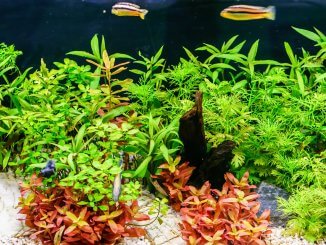
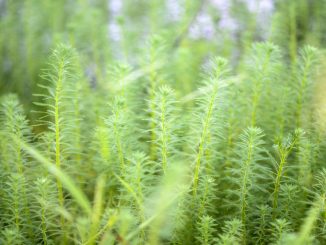
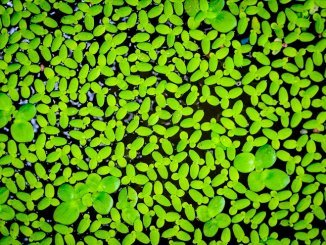
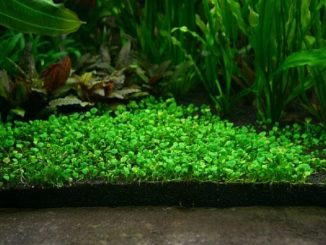
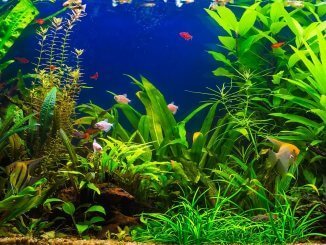
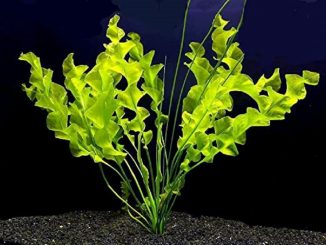
I have had good results with mine; however, it can not tolerate the liquid “CO2” sup that is sold for that purpose for people who do not have std cylinder supplied CO2. So, gaseous CO2 is the only real option if you want it to grow very large with lots of leaves (besides root ferts and adding ferts to the water.) It tolerates 78 F and grows well but has only flowered once and has not created an extra bulbs – so my temp is likely too high.